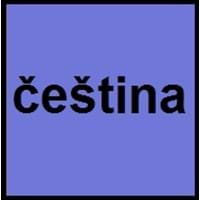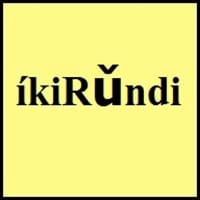Czech and Kirundi
Countries
Czech Republic, European Union
Burma
National Language
Czech Republic
Burundi, Gambia
Second Language
Not spoken in any of the countries
Not spoken in any of the countries
Speaking Continents
Europe
Africa, Asia
Minority Language
Austria, Croatia, Germany, Slovakia
Not spoken in any of the countries
Regulated By
Institute of the Czech Language
Not Available
Interesting Facts
- The Czech language was known as Bohemian as early at 19th century.
- In czech language, there are many words that do not contain vowels.
- Kirundi language is tonal, since it has high and low essential tones.
- Kirundi Language is referred as a language where Meeussen's rule is active, this rule describes a certain pattern of tonal change in Bantu languages.
Similar To
Polish, Slovak and Sorbian
Kinyarwanda Language
Derived From
Not Available
Not Available
Alphabets in
Czech-Alphabets.jpg#200
Kirundi-Alphabets.jpg#200
Writing Direction
Left-To-Right, Horizontal
Not Available
Language Levels
Not Available
Time Taken to Learn
Not Available
How Are You?
Jak se máš?
Urakomeye?
Good Night
dobrou noc
Ijoro ryiza
Good Evening
dobrý večer
Mwiriwe
Good Afternoon
dobré odpoledne
Mwiriwe
Good Morning
dobré ráno
Mwaramutse
Sorry
litovat
Not available
I Love You
Miluji tě
Not available
Excuse Me
promiňte
Not available
Dialect 1
Chod
Rwanda-Rundi
Where They Speak
Chodsko, Bohemia
Burundi, Rwanda, Tanzania, Uganda
How Many People Speak
Not Available
Where They Speak
Czech Silesia, Hlucin, Northeast Moravia
Tanzania
How Many People Speak
Not Available
Where They Speak
Czech Republic, Czech Silesia, Moravia, Slovakia
Tanzania
Native Name
čeština / český jazyk
íkiRǔndi
Alternative Names
Bohemian, Cestina
Not Available
French Name
tchèque
rundi
German Name
Tschechisch
Kirundi
Pronunciation
Not Available
Not Available
Ethnicity
Czechs
Hutu, Tutsi, and Twa
Language Family
Indo-European Family
Niger-Congo Family
Subgroup
Slavic
Not Available
Branch
Western
Not Available
Early Forms
Proto-Czech, Old Czech
No early forms
Standard Forms
Standard Czech
Kirundi
Signed Forms
Czech Sign Language
Not Available
Scope
Individual
Not Available
ISO 639 6
Not Available
Not Available
Glottocode
czec1258
rund1242
Linguasphere
53-AAA-da
No data available
Language Type
Living
Not Available
Language Linguistic Typology
Not Available
Not Available
Language Morphological Typology
Fusional, Synthetic
Not Available
All Czech and Kirundi Dialects
Most languages have dialects where each dialect differ from other dialect with respect to grammar and vocabulary. Here you will get to know all Czech and Kirundi dialects. Various dialects of Czech and Kirundi language differ in their pronunciations and words. Dialects of Czech are spoken in different Czech Speaking Countries whereas Kirundi Dialects are spoken in different Kirundi speaking countries. Also the number of people speaking Czech vs Kirundi Dialects varies from few thousands to many millions. Some of the Czech dialects include: Chod, Lach. Kirundi dialects include: Rwanda-Rundi , Ha. Also learn about dialects in South American Languages and North American Languages.
Czech and Kirundi Speaking population
Czech and Kirundi speaking population is one of the factors based on which Czech and Kirundi languages can be compared. The total count of Czech and Kirundi Speaking population in percentage is also given. The percentage of people speaking Czech language is 0.15 % whereas the percentage of people speaking Kirundi language is 0.13 %. When we compare the speaking population of any two languages we get to know which of two languages is more popular. Find more details about how many people speak Czech and Kirundi on Czech vs Kirundi where you will get native speakers, speaking population in percentage and native names.
Czech and Kirundi Language Codes
Czech and Kirundi language codes are used in those applications where using language names are tedious. Czech and Kirundi Language Codes include all the international language codes, glottocodes and linguasphere.





